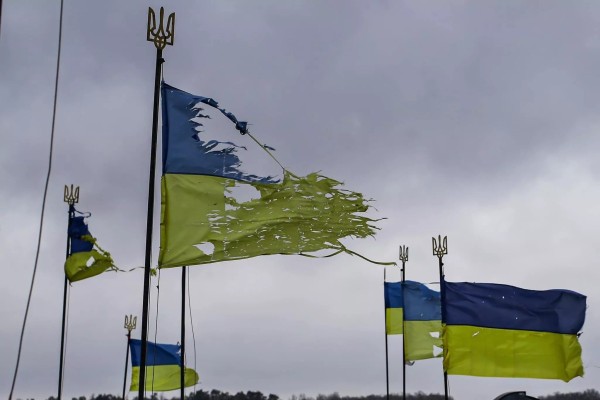America’s surprising annual threat assessment
The Trump administration’s repeated statements about security threats emanating from Canada and Iran don’t square with reality

Offices of the Director of National Intelligence, Washington, DC. Photo courtesy DNI/Facebook.
The White House isn’t telling us what the intelligence community is telling them.
The Trump administration has threatened to use “economic force” on Canada through the implementation of massive tariffs. The United States and Canada have a free trade agreement. But the US can suspend that agreement if necessary for national security concerns. In order to impose tariffs on Canada, President Donald Trump has invoked the International Emergency Economic Powers Act. The justification is the purported flow of fentanyl into the US from Canada.
But the recently published 2025 Annual Threat Assessment does not support that justification. The Annual Threat Assessment is published by the Office of the Director of National Intelligence and “reflects the collective insights” of the Intelligence Community.” The section on Foreign Illicit Drug Actors begins with the statement that “Fentanyl and other synthetic opioids remain the most lethal drugs trafficked into the United States.” Though that may be a national security concern, the assessment notes that deaths from fentanyl are down 33 percent in the past year.
But that’s not all. The Threat Assessment says that Mexican transnational criminal organizations are “the dominant producers and suppliers of illicit drugs, including fentanyl… for the US market.” It reports that “official points of entry along the US-Mexico border were the main entry point for illicit drugs.” The Threat Assessment goes on to say that “China remains the primary source country for illicit fentanyl precursor chemicals and pill pressing equipment… followed by India.”
What is important is not the countries the Threat Assessment names, it is the country it doesn’t. In the section on the threat posed to national security by fentanyl, the Threat Assessment never mentions Canada.
Today, @DNIGabbard released the 2025 Annual Threat Assessment (ATA) of the U.S. Intelligence Community. Read the assessment here: https://t.co/Uh2Bj0WvUB pic.twitter.com/1werdyi2ZD
— Office of the DNI (@ODNIgov) March 25, 2025
While Trump has threatened Canada economically, he has threatened Iran militarily. Trump has told Iran that it has a two month deadline to complete negotiations on a nuclear deal with the US and that rejection of negotiations would dramatically increase the risk of military action against Iran’s nuclear facilities.
“We’re down to final strokes with Iran… Final moments,” Trump told reporters. “Can’t let them have a nuclear weapon… Hopefully we can have a peace deal… I’m just saying I’d rather see a peace deal than the other, but the other will solve the problem.” Trump told NBC News that “If they don’t make a deal, there will be bombing. It will be bombing the likes of which they have never seen before.”
But what Trump is telling Iran and the American media is not what the intelligence community is telling him. In the section on Iran, the Annual Threat Assessment says that the intelligence community “continue[s] to assess Iran is not building a nuclear weapon and that [Ayatollah] Khamenei has not reauthorized the nuclear weapons program he suspended in 2003.”
The situation is similar for Russia. American officials and media always call Russia’s war an unprovoked, full-scale invasion. The Threat Assessment substitutes “large-scale invasion” for “full-scale invasion,” which is a more accurate description of the roughly 142,000 troops that Russia committed to Ukraine. And while not calling the war provoked, the Assessment concedes that Russia really “views” the war “as a proxy conflict with the West” that’s “objective [is] to restore Russian… security in its near-abroad against perceived US and Western encroachment.”
It also assesses that the Russian armed forces have “proven adaptable and resilient,” that the war has “done little to undermine the strategic pillars of its military power” and that “[t]he Ukraine conflict has led to improvements in some Russian military capabilities.” It evaluates that Western efforts to sanction and isolate Russia have failed. Russia’s “alternative partnerships” have strengthened, and its “economy remains the fourth largest in the world.” The “accelerated” partnership with China has helped “promote a global counterweight to the United States.” It further concedes that far from turning Russians against Putin and bringing about regime change, since the war, “the emergence of an alternative to Putin probably is less likely now than at any point in his quarter-century rule.”
Contrary to the US military’s claim, as reported in the New York Times, that the war in Ukraine provided the opportunity for “testing American equipment and tactics,” the intelligence community assesses that “[t]he war in Ukraine has afforded Moscow a wealth of lessons regarding combat against Western weapons and intelligence in a large-scale war.”
As in the case of Canada, though, the most important thing in the Threat Assessment’s section on Russia might be not what is said, but what is not. A persistent justification for continuing to support the war is the claim that Ukraine is the dam holding back an intended Russian conquest of Europe. President Biden told Congress that “If Putin takes Ukraine, he won’t stop there… He’s going to keep going. He’s made that pretty clear.” Then Secretary of Defense Lloyd Austin warned that “Putin will not stop at Ukraine.” And then Secretary of State Antony Blinken explained that Putin has “made clear that he’d like to reconstitute the Soviet empire.”
That, one would think, would constitute a security threat. And yet, the Annual Threat Assessment not once mentions that Russia is a security threat beyond the borders of Ukraine.
From economic war on partners, like Canada, to the threat of war or the support of war against adversaries, like Iran and Russia, the American public is misleadingly being told something very different by their government than their government is being told by its intelligence community.
Ted Snider is a regular columnist on US foreign policy and history, including at Responsible Statecraft. To support his work or for media or virtual presentation requests, contact him at [email protected].










